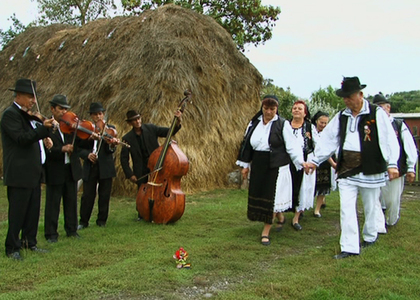> Recommendations

Interferences (I). Multiethnic music from Moldova, Maramureș and Transilvania- Traditional music, 19th January 2016
Starting with this edition, at "Traditional music" we create a time frame dedicated to cultural and multiethnic interferences where we will focus on the Romanian zone, the Central and Western Europe, and also the Balkan area and the Mediterranean Basin. We will listen representative samples from a repertoire which show the mutual influences and the ability to integrate them in the musical folklore in each of these regions. The problems of the ethnicity and the national identity , expressed through the dominant characters of the musical expressions, were the main subject of interest for ethnomusicologists since the last mid-century when this discipline was founded. Beyond folklorism, ethnomusicology developed further into an ambiguous and multi-valent domain, based precisely on these complex principles. The affiliation to a pattern or another of the culture is analyzed through the complex and cumulative view of the determinant factors: historical, ethnic, socio-cultural.
Jewish and Ukrainian musical traditions, from Moldova and Maramureș
Since late 18th century, Bucovina and Northern Moldova (Maramureș, too) had a growth of a well-bonded Jewish community. The Jews established on these lands drawn by some economical facilities and flexible laws towards minorities. They went first to cities and fairs, but to villages also where they were craftsmen or traders. Being friends with other inhabitants (Romanians, Ukrainians, Gypsies, Polish or Germans) lead to a diverse musical culture, claimed mainly by fiddlers (be it Romanians, Jews or Gypsies, often being in the same group) who went to villages and cities and sang to weddings and parties. Their claimed repertoire (nowadays we just have some musical fragments) show the main focus on the wedding songs, with stylistic musical elements from Central Europe, but also "Oriental", all mixed into a specific, personalized style. The Jews were dancing on this music at weddings and any other festive opportunity. In the same multicultural context, there are in Maramureș some villages, a well-bonded community of Ukrainians that have kept their language and customs, in a fully communion with the Romanians from Maramureș. The local fiddlers have inserted in their musical repertoire some songs which equally have specific elements of the two musical dialects, even if they are not actually very different. The Ukrainian wedding songs and dances (such as "cântec de masă", "Huțulca" and "Învârtita ucraineană") have bonded strongly the inhabitants of Maramureș.
Romanian, Hungarian and Gypsy dance music from Central Transilvania
Central Transilvania is an area where Romanians, Hungarians and Gypsies have shared for centuries cultural patterns and features of identity which bonded in structures that condition each other. From this multicultural mix, we will listen music for dance, specific to each one: "Românește p-alungu", "Ceardaș" and "Jocuri de cingherit" (the ladder being specific to Gypsies, expressed by claking the fingers above the head, by men and by spining the hips and a lateral move of the skirts, by women). Improvized melodical shouts, richly embelished, dense and diverse attunements, the uneven and numerous rhytms represent elements which define a complex musical style, with particularities which are specific to Central Transilvania. From this perspective we see that beyond the defining features which give an identity to each ethnic group, the way the songs are sang is also due to the instrumental trio from Transilvania: the violin, the viola and the contrabass.
So I invite you on Tuesday, 19th January 2016, from 8:30 PM, only here, live at Radio România Muzical or on our website www.romania-muzical.ro, at the first edition from many dedicated to cultural interferences, when we will listen some fragments from a repertoire which show the mutual influences and the ability to integrate them into the musical folklore from a few of the Romanian area: Northern Moldova, Maramureș and Central Transilvania.














